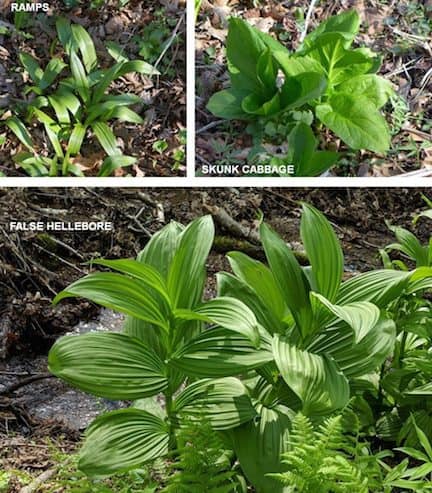
BURLINGTON, Vt. – Wild leeks, also known as ramps, are a wild edible that many Vermonters enjoy each spring. If you are foraging for them, be careful to not mistake the ramps for a poisonous lookalike plant called false hellebore.
The young leaves of American false hellebore are often mistaken for ramps. False hellebore contains poisonous chemicals called alkaloids, and eating false hellebore can make people very sick, enough to hospitalize them.
According to the Northern New England Poison Center there has been at least one reported poisoning in Vermont so far this year. Last year, the poison control center managed 25 cases involving Vermonters with possible false hellebore poisoning, more than four times the usual number.
“Eating false hellebore can be very dangerous,” said Sarah Vose, state toxicologist with the Department of Health. “You can be enjoying a meal one minute and then need to be rushed to the hospital.”
State officials urge Vermonters who harvest wild ramps to make sure they know how to identify them. The leaves of ramps are flat, grow directly from the ground, and are generally found in rich upland forests. Ramps also smell strongly of onion. False hellebore leaves are pleated in appearance, grow from a stalk, occur in floodplains, marshes, and swamps – and do not smell like onion.
“Harvesting wild edibles like ramps is a healthy and rewarding activity, but always know what you are gathering,” said Department of Fish & Wildlife Biologist Bob Popp. “One of the simplest ways to identify a ramp is to smell it. If it doesn’t smell like an onion, don’t eat it, it’s not a ramp.” Popp also reminded foragers to always harvest in a sustainable manner, minimizing impact on the ecosystem.
If you may have eaten false hellebore, do not wait for symptoms to appear. Call the Northern New England Poison Center right away at 1-800-222-1222. You can also chat online at www.nnepc.org, or text “poison” to 85511. If someone has passed out or is having trouble breathing, dial 9-1-1.
Symptoms of poisoning include severe nausea and vomiting, which often move on to slow heartbeat and low blood pressure. Other symptoms may include slowed breathing, weakness, dizziness, numbness and tingling, and sweating.
Learn more about false hellebore and how to recognize it at www.gobotany.nativeplanttrust.org/species/veratrum/viride. Learn more about ramps at www.gobotany.nativeplanttrust.org/species/allium/tricoccum.